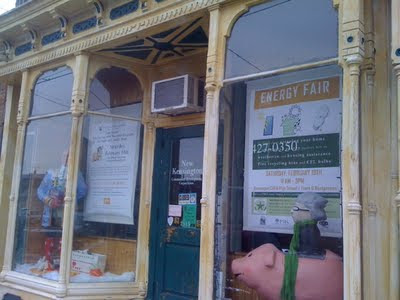 |
| Image: D.A. DeMers |
Or perhaps The Woman.
Stop there, because when I met Marlynn Jannett, a pipe mapping designer I interviewed from Philadelphia Gas Works, my concerns were essentially set to rest.
Her story is one of guts and determination - the American dream exemplified, and a friendly face for the gas company. She's also my neighbor.
Ms. Janett began her career with Philadelphia Gas Works a couple decades ago. She was the first woman hired to work in field services for the company. Her current position involves creating CAD designs of gas pipes for "prudent mains" where the risk of breakage is possible, or in the worst case, has already occurred.
But the biggest initial challenge for Ms Janett's career was to break through the so called glass ceiling.
Her training came by way of a unique outreach program from the Private Industry Council developed to provide women with engineering skills needed to facilitate their advance into the industrial workforce - a workforce completely dominated by men.
"This all came to me a bit by accident," she said. "I was working in the billing department of a legal firm when I got laid off. Then I heard about the PIC program and thought 'why not?'"
 |
| Marlynn Janett |
"Some guys weren't too happy at the time, but they got used it," she acknowledged, when asked if she sensed resentment by her male counterparts.
Now, a master of her trade, she's moved well beyond the issues of those days. They were simply milestones of an evolving culture. The only concern she has presently at her job is "working in the middle of Frankford Ave, lifting a manhole cover, and trying not to get run over by a car."--D.A. DeMers.
A Clean Energy Plan with the Community.
PGW recently introduced a number of green energy programs that intersect with various sectors of Philadelphia's business and residential communities. Their EnergySense program is made up of several initiatives that strive to help the company’s residential, commercial and industrial customers conserve energy and save money. It's also expected to create as many as 1,000 new local jobs, reduce the region’s carbon dioxide emissions by 1.24 million tons - the equivalent of taking 200,000 cars off Philadelphia’s streets - and support the Mayor's Office of Sustainability's Greenworks plan to make Philadelphia the greenest city in America.
 | ||
| Energy outreach at the NKCDC. Image: D.A DeMers |
The plan involves connecting with a consortium of non-profit energy groups, neighborhood organizations, and city departments to provide initiatives such as the The Enhanced Low Income Retrofit Program, Residential Heating Equipment Rebates, Commercial and Industrial Retrofit Incentives, Commercial and Industrial Equipment Rebates, High Efficiency Construction Incentives, and Comprehensive Residential Incentives.
Over the next five years, the company plans to invest $60 million to generate over $110 million in net savings for all of PGW’s customers. Saving money while saving the planet? Sounds like a win-win solution for everybody.--D.A. DeMers.
More info regarding PGW's programs can be found at www.pgworks.com. Plans administered by the Mayor's Office of Sustainability can be found at www.phila.gov/green.



